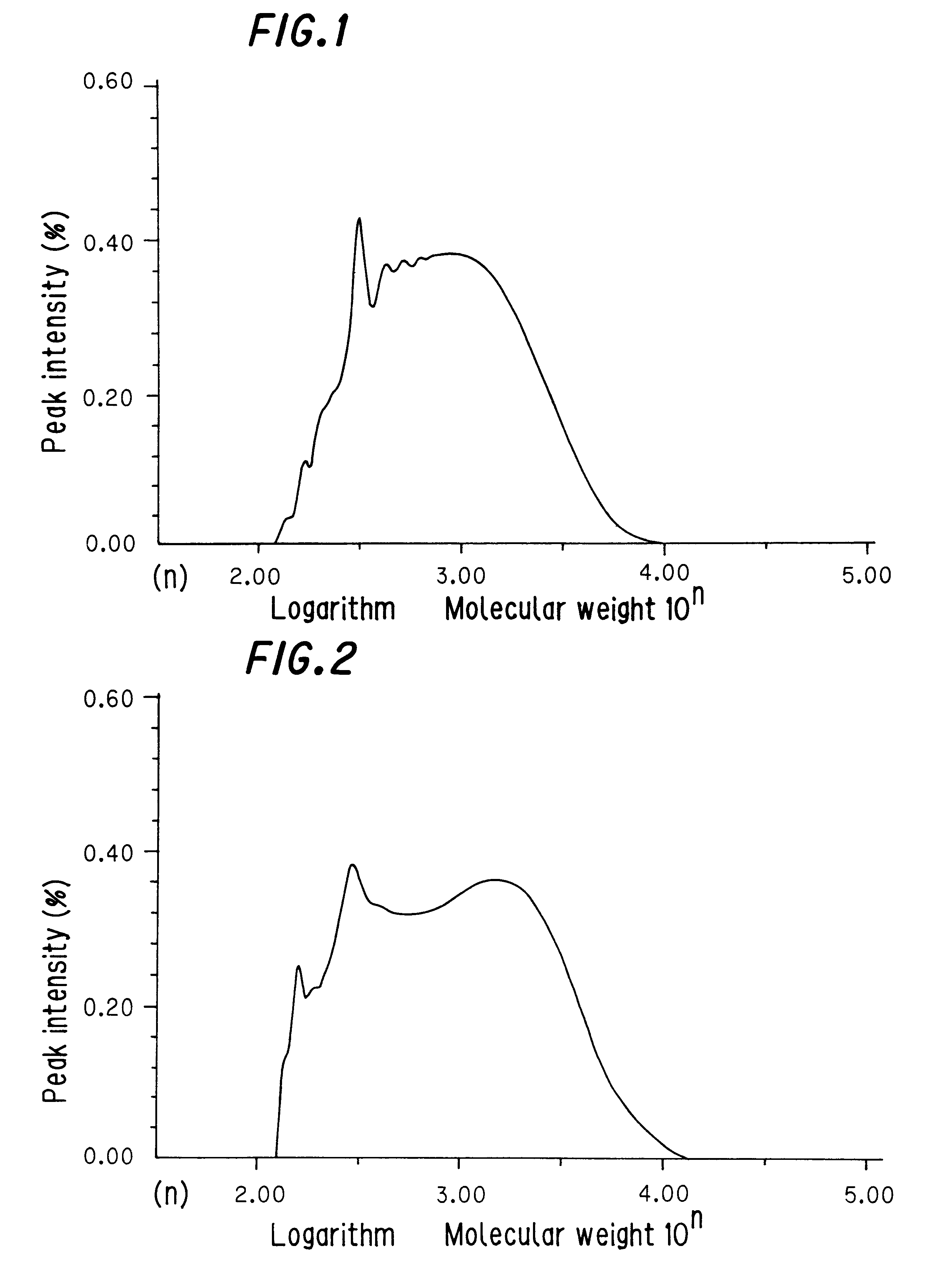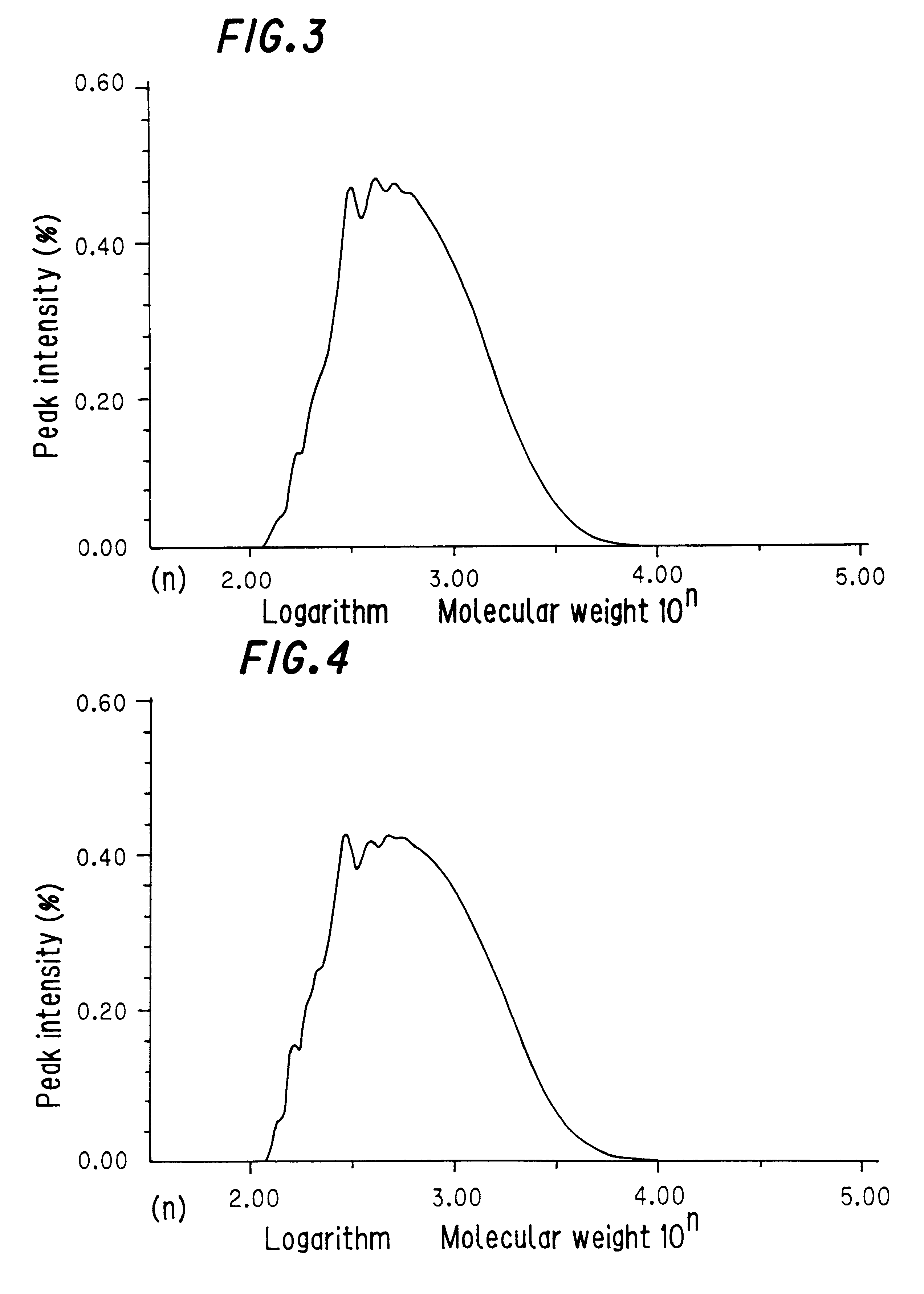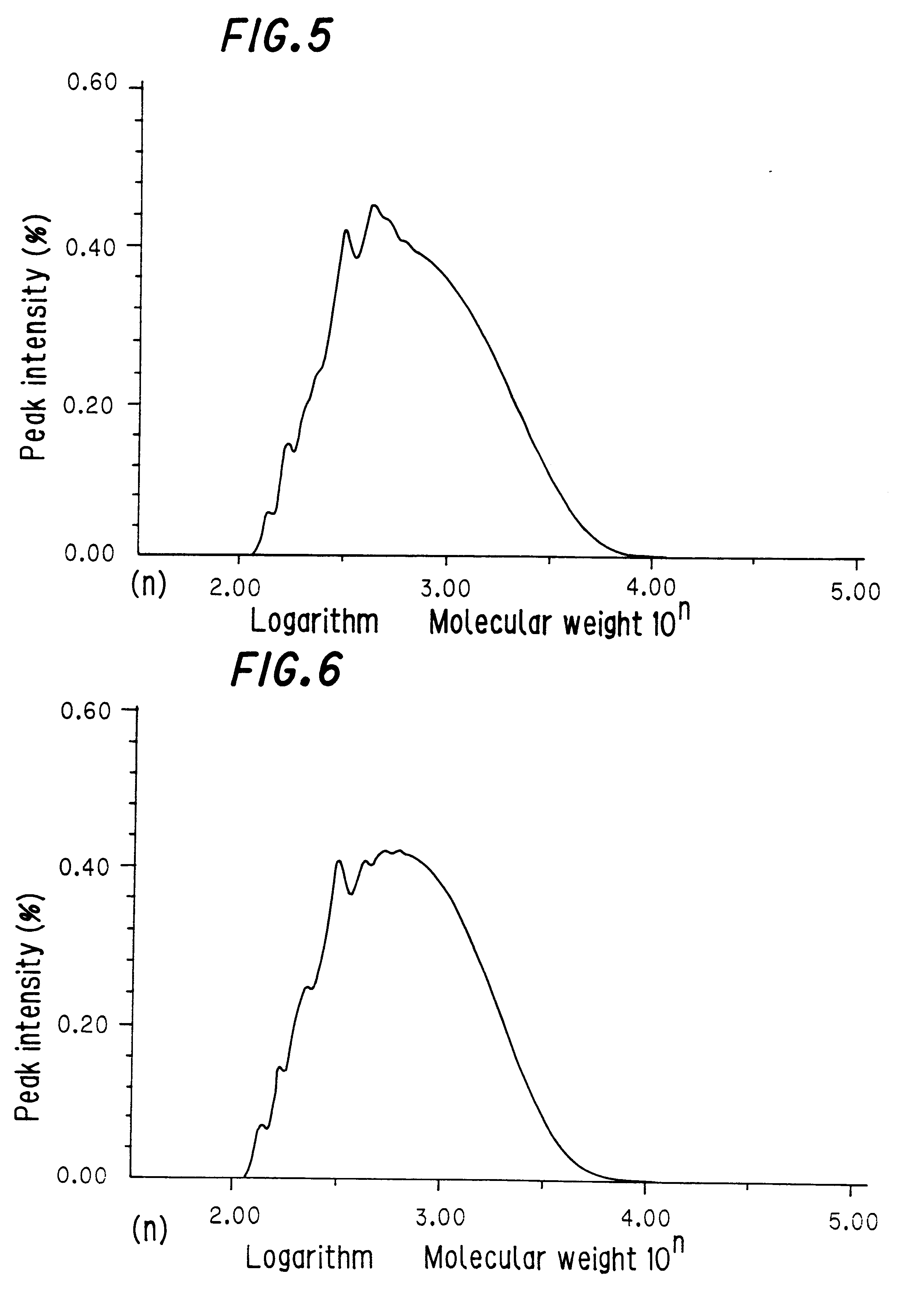Copolymer and process for producing the same
a technology applied in the field of copolymer and process for producing the same, can solve the problems of poor workability disadvantageously, unsatisfactory value at present, and insufficient melt viscosity,
- Summary
- Abstract
- Description
- Claims
- Application Information
AI Technical Summary
Problems solved by technology
Method used
Image
Examples
example 1
Production of a Copolymer of Dicyclopentadiene and Styrene
Xylene (141 g, 180 parts by weight per 100 parts by weight of starting monomers) as a solvent was charged into a 300-milliliter polymerization vessel which had been purged with nitrogen and was fitted with a stirrer. While the solvent was heated to 260.degree. C. with stirring, a mixture of 31 g of dicyclopentadiene and 47 g of styrene (weight ratio of 40:60) was added thereto in divided portions over the course of 2 hours. Then, the copolymerization was further continued for 5 hours.
After the completion of the reaction, the reaction solution was taken out, and treated with a rotary evaporator at a temperature of 200.degree. C. and a pressure of 10 mmHg for 3 hours to remove unreacted monomers and xylene. In this manner, 70 g of a copolymer of dicyclopentadiene and styrene were obtained.
The properties of this copolymer are shown in Table 1.
Example 2
Production of a Hydrogenated Copolymer of Dicyclopentadiene and Styrene
Sixty g...
example 2
except that the copolymer obtained in Comparative Example 1 was used instead of the copolymer obtained in Example 1 to form a hydrogenated product of a copolymer of dicyclopentadiene and styrene.
The properties of the hydrogenated copolymer are shown in Table 1.
example 3
Production of a Copolymer of Dicyclopentadiene and Styrene in the Presence of a Sulfur Compound
Xylene (330 g, 90 parts by weight per 100 parts by weight of starting monomers) as a solvent was charged into a 1-liter polymerization vessel which had been purged with nitrogen and was fitted with a stirrer. To xylene were added 3.66 g (1 part by weight per 100 parts by weight of starting monomers) of 2-methyl-5-tert-butylthiophenol. The mixture was heated to 260.degree. C., and with stirring, a mixture of 183 g of dicyclopentadiene and 183 g of styrene (weight ratio of 50:50) as starting monomers was added thereto in divided portions over the course of 3 hours. Then, the copolymerization was further continued for 7 hours.
After the completion of the reaction, the reaction solution was taken out, and treated with a rotary evaporator at a temperature of 200.degree. C. and a pressure of 10 mmHg for 2 hours to remove unreacted monomers and xylene. In this manner, 330 g of a copolymer of dicyc...
PUM
| Property | Measurement | Unit |
|---|---|---|
| bromine number | aaaaa | aaaaa |
| temperature | aaaaa | aaaaa |
| time period | aaaaa | aaaaa |
Abstract
Description
Claims
Application Information
 Login to View More
Login to View More - R&D
- Intellectual Property
- Life Sciences
- Materials
- Tech Scout
- Unparalleled Data Quality
- Higher Quality Content
- 60% Fewer Hallucinations
Browse by: Latest US Patents, China's latest patents, Technical Efficacy Thesaurus, Application Domain, Technology Topic, Popular Technical Reports.
© 2025 PatSnap. All rights reserved.Legal|Privacy policy|Modern Slavery Act Transparency Statement|Sitemap|About US| Contact US: help@patsnap.com



